Green Pus Under Toenail: Infected Nail (Paronychia) – Symptoms, Causes, and Treatment
What causes green pus under the toenail. Symptoms of an infected toenail or toe. When to see a doctor for a toe infection. How to treat a toenail or toe infection at home.
Understanding Toe and Toenail Infections
Toe and toenail infections, also known as paronychia, are common occurrences that can cause significant discomfort and, if left untreated, potentially serious complications. These infections can arise from a variety of causes, ranging from improper nail trimming to exposure to bacteria or fungi in public areas. By understanding the symptoms, causes, and appropriate treatment methods, individuals can take proactive steps to address and prevent toe and toenail infections.
Symptoms of a Toe or Toenail Infection
The primary symptoms of a toe or toenail infection include redness, swelling, pain, and the presence of pus, which may appear green in color. In some cases, the toenail itself may become cracked, thickened, or discolored, indicating a fungal infection. It is important to note that individuals with diabetes or a weakened immune system may be more susceptible to these types of infections and may not feel the typical symptoms due to nerve damage or impaired immune function.

Causes of Toe and Toenail Infections
Toe and toenail infections can be caused by a variety of factors, including:
- Improper nail trimming, leading to ingrown toenails
- Trauma to the toe or toenail, such as from tight-fitting shoes
- Exposure to bacteria or fungi in public areas, such as locker rooms or swimming pools
- Underlying medical conditions, such as diabetes or a weakened immune system
When to Seek Medical Attention
If the symptoms of a toe or toenail infection do not improve with home treatment, or if the infection appears to be worsening, it is important to seek medical attention. Seek immediate medical care if you experience a fever, chills, red streaks on the skin, or if the infection is accompanied by pain in the joints or muscles. Your doctor can properly diagnose the type of infection and prescribe the appropriate treatment, which may include antibiotic or antifungal medications, or in some cases, minor surgical procedures.
Home Treatment for Toe and Toenail Infections
In many cases, toe and toenail infections can be effectively treated at home with a combination of the following remedies:
- Soaking the affected toe in warm water and salt for 15-20 minutes several times a day
- Applying a medicated ointment or cream to the affected area and covering with a clean bandage
- Gently lifting the corner of an ingrown toenail and placing a small piece of cotton or waxed dental floss underneath to help the nail grow away from the skin
- Wearing loose, comfortable shoes that do not rub or put pressure on the affected toe
- Keeping the foot dry and changing socks regularly
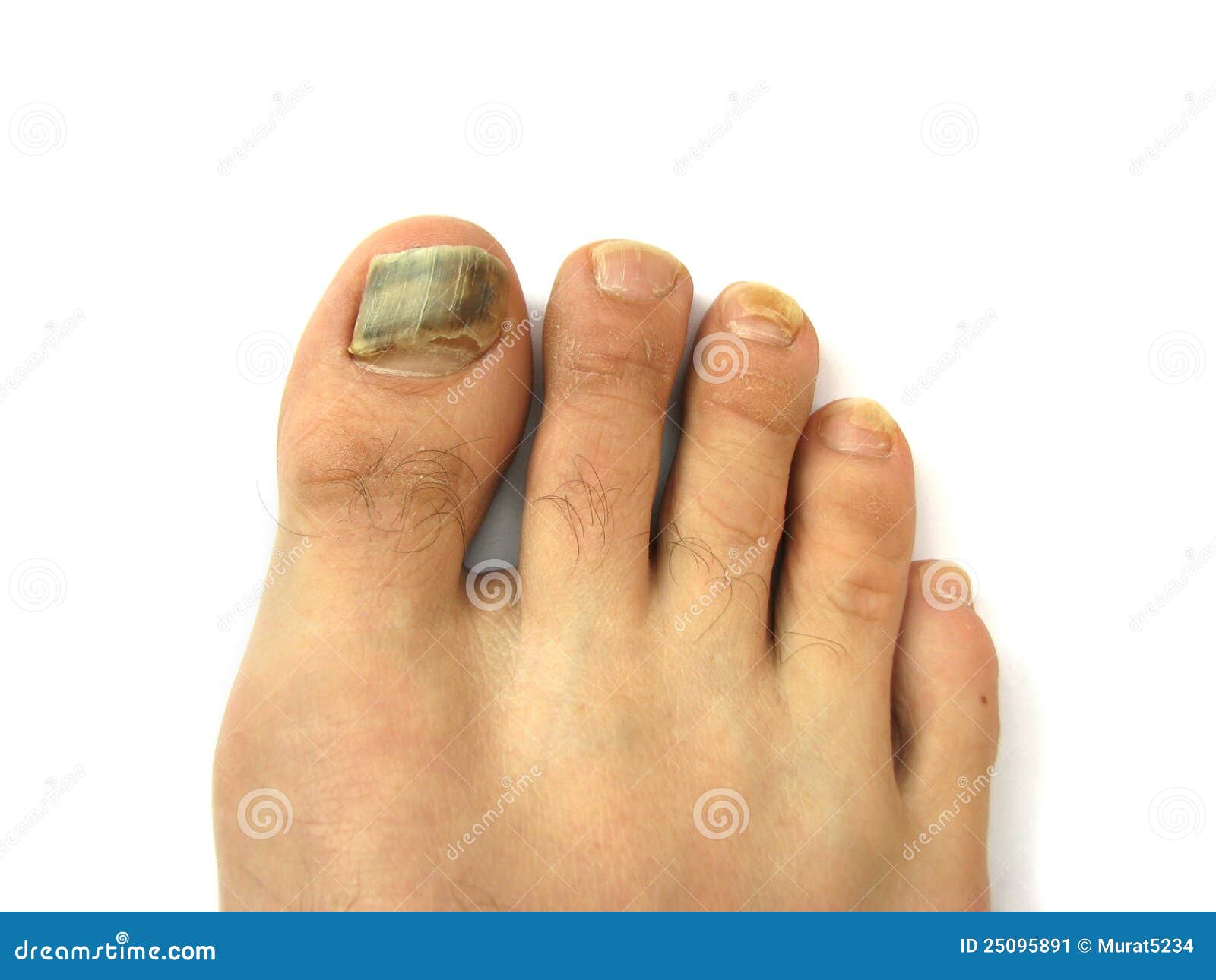
Preventing Toe and Toenail Infections
To help prevent toe and toenail infections, it is important to practice good foot hygiene and take the following precautions:
- Trim toenails straight across and avoid cutting them too short
- Avoid walking barefoot in public areas, such as locker rooms or swimming pools
- Wear properly fitting shoes that provide adequate support and protection for the feet
- Maintain good overall foot health, including proper care for any existing conditions, such as diabetes or a weakened immune system
Seeking Professional Help
If home treatment is not effective or the infection appears to be worsening, it is important to seek medical attention from a healthcare professional, such as a primary care physician or a podiatrist (foot specialist). They can properly diagnose the type of infection, prescribe appropriate medication, and, if necessary, perform minor surgical procedures to address the problem.
Conclusion
Toe and toenail infections, while common, can be a source of significant discomfort and, if left untreated, potentially serious complications. By understanding the symptoms, causes, and appropriate treatment methods, individuals can take proactive steps to address and prevent these types of infections. If home treatment is not effective or the infection appears to be worsening, it is important to seek medical attention to ensure proper diagnosis and treatment.

Infected Toe or Toenail: Symptoms, Causes, & Treatment
Written by WebMD Editorial Contributors
- What Causes an Infected Toe?
- What Are the Symptoms?
- When to See Your Doctor
- How Is a Toe Infection Treated?
Your toe is red, swollen, and sore. Could it be infected?
Toe infections are common — especially in people with diabetes or a weakened immune system. Knowing what caused your infection can help you figure out whether you can treat it yourself, or you need to call a doctor.
An infection in the skin around the toenail is called paronychia. It’s normally caused by a bacterium. The toenail can also be infected with a fungus.
If your toe is infected, one of these things might be to blame:
- You cut the nail too short, or you cut the cuticle around the nail.
- You have an ingrown toenail (the side of your nail grows into the skin).
- You’ve picked up a fungus, which you can get if you walk barefoot in common areas like a gym shower or locker room.

- You have a callus — thickened skin caused by rubbing (for example, when your toe rubs against your shoe).
- You put your feet in water a lot (for example, if you swim a lot).
You’re more likely to get an infected toe if you have diabetes. Damage to your blood vessels from high blood sugar can make it harder for your body to fight off infections. And diabetic nerve damage can prevent you from feeling minor trauma that could lead to a toe infection.
If you have a weakened immune system, you’re also more likely to get toe infections. This includes people with HIV, or those who’ve had an organ transplant.
You might have an infected toe if you notice:
- Redness
- Soreness or pain
- A pus-filled blister, or pus that drains from your toe
- Cracked, thickened, yellow toenails (from a fungal infection)
Diabetes can prevent you from feeling that you might have an infection, so check your feet every day. Look for redness, swelling, pus, and other signs of infection.
Make an appointment with your primary care doctor or a podiatrist (foot specialist) if you have diabetes and if the redness, swelling, and other symptoms don’t go away with home treatment. See your doctor right away if:
- You have a fever or chills
- You notice red streaks on the skin leading away from the infected area
- Your joints or muscles hurt
Your doctor will examine your toe. You might need tests to find out what type of bacteria or fungus caused the infection.
Get regular checkups from your podiatrist if you have diabetes, so you can find infections and other problems early. See the doctor more often if you have any known foot problems, like an ingrown toenail.
If bacteria caused the infection, an antibiotic cream or pill can clear up the problem. Fungal infections are treated with antifungal pills or cream. You can buy antifungal medicines over the counter or with a prescription from your doctor.
To treat an ingrown toenail, your doctor might lift the nail and place a piece of cotton or a splint underneath it. This will help the nail grow away from your skin. If lifting doesn’t work, the doctor can remove part or all of the affected nail.
This will help the nail grow away from your skin. If lifting doesn’t work, the doctor can remove part or all of the affected nail.
Sometimes the infection can cause a pus-filled blister to form. Your doctor might have to drain the blister.
You can also try these remedies at home:
- Soak the toe for about 15 minutes in a bathtub or bucket filled with warm water and salt. Do this three to four times a day.
- Rub a medicated ointment on the toe and wrap it in a clean bandage.
- To treat an ingrown toenail, gently lift the corner of the nail. Place a small piece of cotton or waxed dental floss underneath to hold the nail away from your skin.
You’ll also want to protect your toe while it heals. To help it heal properly, wear loose, comfortable shoes that don’t rub. Keep your foot dry, and change your socks every day.
Top Picks
Ingrown Toenail Infection: Symptoms and Treatments
Ingrown Toenail Infection: Symptoms and Treatments
- Health Conditions
- Featured
- Breast Cancer
- IBD
- Migraine
- Multiple Sclerosis (MS)
- Rheumatoid Arthritis
- Type 2 Diabetes
- Articles
- Acid Reflux
- ADHD
- Allergies
- Alzheimer’s & Dementia
- Bipolar Disorder
- Cancer
- Crohn’s Disease
- Chronic Pain
- Cold & Flu
- COPD
- Depression
- Fibromyalgia
- Heart Disease
- High Cholesterol
- HIV
- Hypertension
- IPF
- Osteoarthritis
- Psoriasis
- Skin Disorders and Care
- STDs
- Featured
- Discover
- Wellness Topics
- Nutrition
- Fitness
- Skin Care
- Sexual Health
- Women’s Health
- Mental Well-Being
- Sleep
- Product Reviews
- Vitamins & Supplements
- Sleep
- Mental Health
- Nutrition
- At-Home Testing
- CBD
- Men’s Health
- Original Series
- Fresh Food Fast
- Diagnosis Diaries
- You’re Not Alone
- Present Tense
- Video Series
- Youth in Focus
- Healthy Harvest
- No More Silence
- Future of Health
- Wellness Topics
- Plan
- Health Challenges
- Mindful Eating
- Sugar Savvy
- Move Your Body
- Gut Health
- Mood Foods
- Align Your Spine
- Find Care
- Primary Care
- Mental Health
- OB-GYN
- Dermatologists
- Neurologists
- Cardiologists
- Orthopedists
- Lifestyle Quizzes
- Weight Management
- Am I Depressed? A Quiz for Teens
- Are You a Workaholic?
- How Well Do You Sleep?
- Tools & Resources
- Health News
- Find a Diet
- Find Healthy Snacks
- Drugs A-Z
- Health A-Z
- Health Challenges
- Connect
- Breast Cancer
- Inflammatory Bowel Disease
- Psoriatic Arthritis
- Migraine
- Multiple Sclerosis
- Psoriasis
Medically reviewed by William Morrison, M. D. — By Corey Whelan on December 6, 2018
D. — By Corey Whelan on December 6, 2018
An ingrown toenail occurs when the edge or corner tip of the nail pierces the skin, growing back into it. This potentially painful condition can happen to anyone and usually occurs in the big toe.
When left untreated, ingrown toenails can cause infections that may spread into the underlying bone structure of the foot.
Any condition that reduces blood flow to the feet, such as diabetes or peripheral arterial disease, may make ingrown toenails more likely. People with these types of conditions may also experience severe complications if infection does occur.
As with many potentially serious conditions, ingrown toenails start out with minor symptoms that can escalate. Pay attention to the early symptoms of this condition to prevent an infection or other complication. Symptoms of an infected ingrown toenail include:
- redness or hardening of the skin around the nail
- swelling
- pain when touched
- pressure under the nail
- throbbing
- bleeding
- build-up or oozing of fluid
- foul smell
- warmth in the area around the nail
- pus-filled abscess where the nail punctured the skin
- overgrowth of new, inflamed tissue at the edges of the nail
- thick, cracked yellowing nails, specifically in fungal infections
You can get either a fungal or bacterial infection in an ingrown toenail. For example, MRSA, a drug-resistant staph infection, lives on skin and can cause infection to occur.
For example, MRSA, a drug-resistant staph infection, lives on skin and can cause infection to occur.
MRSA infections can spread into the bone, requiring weeks of intravenous antibiotics and sometimes surgery. It’s very important to treat infected ingrown toenails quickly in order to avoid this complication.
Any condition that reduces blood flow or causes nerve damage to the feet can also inhibit healing. This can make infections more likely and harder to treat.
Complications resulting from hard-to-treat infections can include gangrene. This complication typically requires surgery to remove dead or dying tissue.
If you’re having trouble walking, or are in pain, see a doctor if your toenail has pierced the skin, and you can’t lift it or cut it away. Any infection that doesn’t get better with at-home treatment should also be seen by a doctor.
If you have diabetes, have a doctor check your feet regularly. Due to nerve damage, you may not feel the discomfort associated with an ingrown toenail, delaying treatment.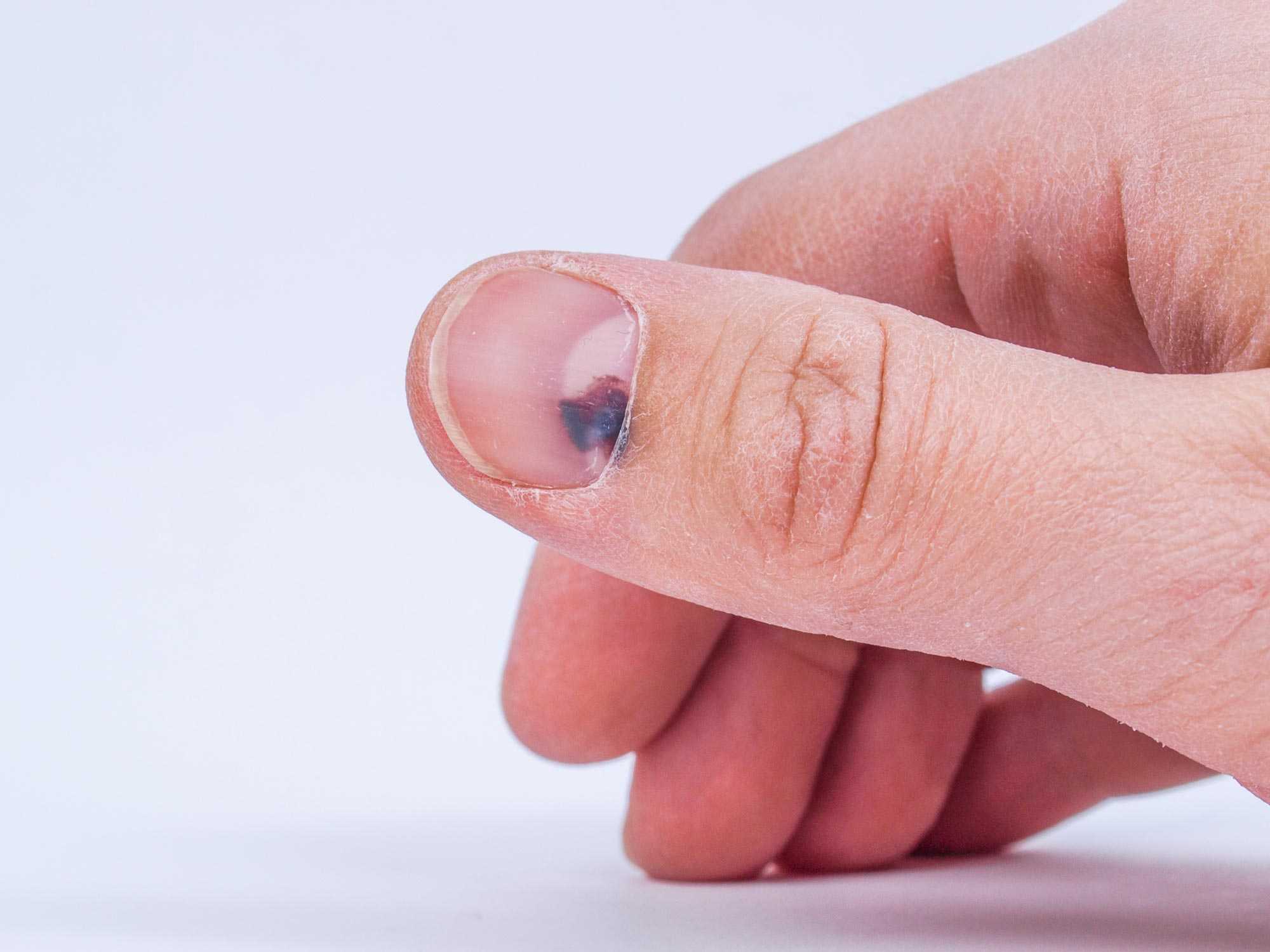
Last medically reviewed on December 6, 2018
How we reviewed this article:
Healthline has strict sourcing guidelines and relies on peer-reviewed studies, academic research institutions, and medical associations. We avoid using tertiary references. You can learn more about how we ensure our content is accurate and current by reading our editorial policy.
- Ingrown toenail: Overview. (2018).
ncbi.nlm.nih.gov/books/NBK513138/ - Majcen ME, et al. (2009). Interpretation of radiologic abnormalities in patients with chronically infected ingrown toenails with regard to a possible exogenic osteomyelitis. DOI:
10.1016/j.jpedsurg.2009.05.032http://10.1016/j.jpedsurg.2009.05.032 - Mayo Clinic Staff. (2015). Osteomyelitis.
mayoclinic.org/diseases-conditions/osteomyelitis/symptoms-causes/syc-20375913 - Mayo Clinic Staff. (2018). Ingrown toenails.
mayoclinic.org/diseases-conditions/ingrown-toenails/diagnosis-treatment/drc-20355908 - Ogur R, et al.
 (2005). Managing infected ingrown toenails.
(2005). Managing infected ingrown toenails.
ncbi.nlm.nih.gov/pmc/articles/PMC1472971/ - Peripheral arterial disease (PAD). (n.d.).
foothealthfacts.org/conditions/peripheral-arterial-disease-(p-a-d-)
Share this article
Medically reviewed by William Morrison, M.D. — By Corey Whelan on December 6, 2018
Read this next
- 10 Ingrown Toenail Remedies: Natural, Medication, and More
Medically reviewed by Jenneh Rishe, RN
It’s important to treat ingrown toenails as soon as they occur to prevent infection. Here are 10 remedies that may be used to treat mild to severe…
READ MORE
- How to Treat an Ingrown Fingernail
Medically reviewed by William Morrison, M.D.
Ingrown fingernails can often be treated at home, but sometimes they’ll require a trip to the doctor.
READ MORE
- Ingrown Toenails: Why Do They Happen?
Medically reviewed by William Morrison, M.D.
Ingrown toenails occur when the edges or corners of a nail grow into the skin next to it, causing tenderness, redness, and even bleeding.

READ MORE
- Nail Abnormalities
Medically reviewed by Alana Biggers, M.D., MPH
Normal, healthy nails appear smooth and have consistent coloring. As you age, you may develop vertical ridges, or your nails may be a bit more brittle.
READ MORE
- Recognizing and Treating Common Foot Problems
As an integral part of your everyday life, your feet experience a lot of wear and tear. You’re likely to develop foot problems over time as a result.
READ MORE
- The Best Shoes for Plantar Fasciitis of 2023
Medically reviewed by Gregory Minnis, DPT
We interviewed four experts on what to look for (and avoid) in a shoe if you have plantar fasciitis. We’ve also recommended six shoes to consider for…
READ MORE
- What Causes Lateral Foot Pain?
Medically reviewed by William Morrison, M.D.
Having pain on the outside of your foot? It could be several things. Learn how to identify different types of lateral foot pain and get relief.

READ MORE
- What Are These Red Spots on My Feet?
Medically reviewed by Avi Varma, MD, MPH, AAHIVS, FAAFP
Red spots on the feet may be caused by an environmental factor like insects or a health condition. Discover seven causes, related symptoms, and…
READ MORE
- 4 Healthier Cooking Oils (and 4 to Avoid)
By Kelsey Kunik, RDN and Lauren Panoff, MPH, RD
It’s key to choose a cooking oil that’s healthy after you heat it. We look into four cooking oils that tolerate high heat cooking as well as oils that…
READ MORE
Pseudomonia or green monsters
On the pages of our magazine, we have already talked about various infections and diseases of the nail apparatus more than once. This article will discuss pseudomonia or Pseudomonas aeruginosa, which you can meet with absolutely every client, regardless of how the client treated extended nails.
3 types of infection occur in the area of the nail apparatus, the causative agents of which can be viruses, bacteria and fungi.
In this case, a fungal infection most often affects the body of the nail (with the exception of yeast fungi). Viral infection affects only the soft tissues of the nail apparatus. Bacteria are the causative agents of the vast majority of rapid and acute inflammation of the soft tissues of the nail apparatus. And only one type of infection is able to affect the actual nail plate and it occurs only under artificial turf. I also want to note that neither the chemical formula of the artificial material, nor the chosen modeling technology, nor the proper care carried out by the client independently for extended nails, nor additional preparations are able to resist the occurrence of this infection, no matter what the manufacturer’s advertising annotations promise.
Pseudomonas Aeruginosa is the causative agent of infection under artificial nail modeling. This bacterium with a beautiful name in Latin, in Russian is called Pseudomonas aeruginosa or Pseudomonas.
Pseudomonia is a bacterial infection that can be localized both between the artificial nail and the natural nail plate, and between the natural nail plate and the nail bed. They thrive in damp places and feed on dead tissue and bacteria in the nail plate, and the moisture provides a favorable environment for growth. Later, under the influence of this infection, the nail plate darkens and softens under the artificial surface, and the bacteria penetrate into the deeper layers. If the bacteria got between the nail plate and the bed of the nail, then, in addition to discoloration, detachment of the nail plate may occur
They thrive in damp places and feed on dead tissue and bacteria in the nail plate, and the moisture provides a favorable environment for growth. Later, under the influence of this infection, the nail plate darkens and softens under the artificial surface, and the bacteria penetrate into the deeper layers. If the bacteria got between the nail plate and the bed of the nail, then, in addition to discoloration, detachment of the nail plate may occur
Many masters are accustomed to consider this inflammation as fungal. Some call it common mold because of the blue-green coloration of nails affected by Pseudomonas, which is classic for this type of infection. Which resembles ordinary bread mold. However, mold fungi are not pathogenic for the human body.
This misdiagnosis often costs clients a lot of money spent on expensive antifungal drugs and also leads to the progression of an untreated infection and its spread to the area of the nail folds. The consequences of this development of infection can be dangerous for the whole organism.
Pseudomonas aeruginosa bacteria are found in aquatic environments at normal temperatures and are abundant in soil and the environment. A sufficient amount of them is always present in wet rooms (which are cosmetic, nail and hairdressing salons, as well as hospitals). Hospital institutions deserve special attention, since pseudomonial infection is a type of hospital-acquired and hospital-acquired infections. Until now, Pseudomonas aeruginosa infection is considered by many authors as a conditionally pathogenic infection. An important role in its development will always be played by the immune status of the body. Despite its conditional pathogenicity (the ability to cause inflammation), Pseudomonas aeruginosa can cause severe infections of soft tissues and internal organs. Especially at risk are small or weakened children and the elderly.
Middle-aged and young people are extremely rarely infected with Pseudomonas aeruginosa. The acidity of the environment also plays an important role in the development of pseudomonas. She feels great in a normal and slightly alkaline environment. In an acidic environment, Pseudomonas aeruginosa dies almost instantly.
She feels great in a normal and slightly alkaline environment. In an acidic environment, Pseudomonas aeruginosa dies almost instantly.
Pseudomonas aeruginosa is a strict aerobe since it can develop only in conditions of sufficient oxygen. However, modern observations of the development of infection on the surface of the nail under artificial coatings show that Pseudomonas aeruginosa infection can also develop with insufficient oxygen supply. In this case, the main condition for the development of pseudomonia on a natural nail is a temperature of 36-37 * and very high humidity. Pseudomonia in the course of their life and development produce a pigment that colors their habitat (nail plate) in a blue-green color. This pigment is called pyocyanin.
However, experienced craftsmen will notice that the color of nails affected by blue purulent infection varies from bright blue-green to brown-brown and dirty yellow-green. The fact is that the acidity of the environment affects the color of pyocyanin. In a neutral and slightly alkaline environment, the color of the pigment will remain blue or green. With increased action of acids, the color of the pigment may even change to bright red or orange. However, in recent times, descriptions of new types of pseudomonia have appeared, which produce brown and even completely black pigment.
In a neutral and slightly alkaline environment, the color of the pigment will remain blue or green. With increased action of acids, the color of the pigment may even change to bright red or orange. However, in recent times, descriptions of new types of pseudomonia have appeared, which produce brown and even completely black pigment.
Reasons for development.
As mentioned above, a Pseudomonas aeruginosa infection does not begin to develop without a reason.
Pseudomonia needs special conditions for development: humidity and warmth, as well as weakened human immunity.
The most important condition for infection of the surface of the nail with Pseudomonas aeruginosa is the presence of detachment of the artificial coating from the natural nail. This can be either an independent exfoliation of the material due to incorrect extension technology or improper use of extended nails, or a flaw in the exfoliation during nail correction (when the master leaves the exfoliated area and simply “fills” with new material).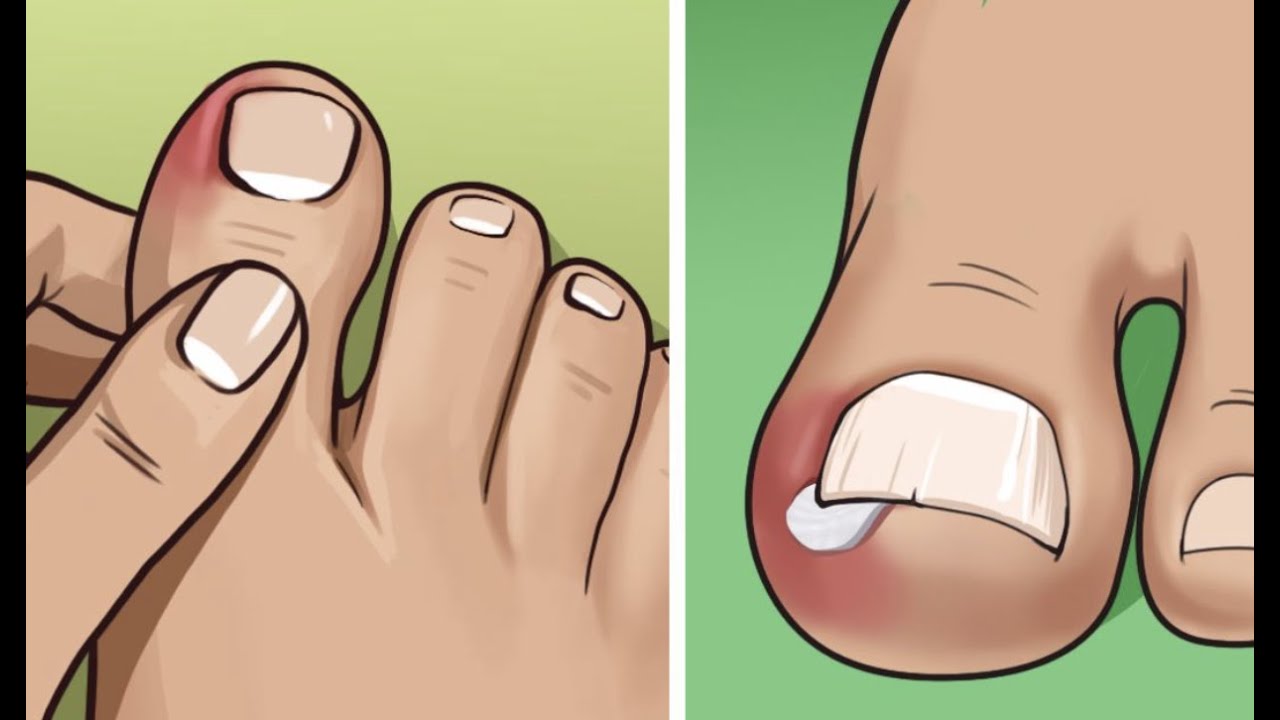 In the “pocket” between the artificial and natural nails, just ideal conditions are created for the development of bacteria, so they immediately populate the cavity. In this cavity there is a favorable environment for pseudomonia: high humidity, constant heat and a nutrient substrate, which is the keratin of a natural nail. Nail keratin is represented by almost one hundred percent protein and is a good environment for the development of these bacteria.
In the “pocket” between the artificial and natural nails, just ideal conditions are created for the development of bacteria, so they immediately populate the cavity. In this cavity there is a favorable environment for pseudomonia: high humidity, constant heat and a nutrient substrate, which is the keratin of a natural nail. Nail keratin is represented by almost one hundred percent protein and is a good environment for the development of these bacteria.
A few days after infection, a blue-green spot appears. Observed changes in the color of the nail indicate the development of an infection. Pseudomonas aeruginosa’s waste product is a pigment that colors their environment of the nail plate blue-green.
Spot may be less than the area of delamination or equal to the entire cavity. In a fairly short time, the spot becomes intensely colored and begins to grow in size. There are cases when the infection affected the entire surface of the nail bed and even spread under the unseparated artificial material. This whole process takes a week or two and is not accompanied by any other symptoms. At the initial stage, the infection can be cured in salon conditions, without resorting to intensive medical care. The most dangerous thing comes at the next stage of the development of the infection, when, in addition to an unaesthetic green spot on the nail, symptoms such as burning, pain, and even suppuration already appear.
This whole process takes a week or two and is not accompanied by any other symptoms. At the initial stage, the infection can be cured in salon conditions, without resorting to intensive medical care. The most dangerous thing comes at the next stage of the development of the infection, when, in addition to an unaesthetic green spot on the nail, symptoms such as burning, pain, and even suppuration already appear.
In practice, such neglected cases are extremely rare, because when a green tint of the nail plate appears, clients immediately turn to the master. If the master professionally treats the site of infection, then the outcome is likely to be favorable.
If the nail becomes painful, reddened, and even more so pus appears, it is necessary to seek emergency medical help, since pseudomonia infection, which has passed to the soft tissues of the finger, can become ascending and acquire a transient acute character.
Another way of the appearance of infection on the nails is possible and even very likely in the case when the master
neglects the correct technology for building and correcting nails, that is, the use of professional antiseptics and preparations, non-compliance with a certain sequence of preparing a natural nail for building.
In this case, the pseudomonia found on the surface of the nails are “sealed” under a layer of acrylic or gel. Bacteria due to nail exudation still get enough water they need and begin to multiply rapidly under artificial turf. It must be said that in this case the development of the infection will go in the most unfavorable way for the client. The infection will most likely spread not over the surface of the nail, but over its entire thickness. In almost a few days, the infection is able to reach living structures and penetrate under the natural nail. The result will be onycholysis (peeling of the natural nail from the nail bed). If the infection does not reach living tissues, then developing on the surface of Pseudomonas aeruginosa, it will cause detachment of the artificial material and the appearance of a pocket (favorable habitat), which was mentioned above.
What to do.
So, let’s consider the actions of the wizard. Regardless of the extent of the infection, the first thing the master should do is remove the artificial material. This must be done for correct diagnosis, so as not to confuse a Pseudomonas aeruginosa infection with a fungal infection or a banal hematoma.
This must be done for correct diagnosis, so as not to confuse a Pseudomonas aeruginosa infection with a fungal infection or a banal hematoma.
Example 1.
The infection is located on the surface of the nail plate or in its upper layers. At the first stage of development, when the infection is on the surface of the nail, treatment is not difficult.
1. Wash the hands of the client and the master, treat with an antiseptic.
2. Remove artificial turf as above.
3. Lay a disposable napkin or towel on the tabletop. Take an old natural nail file or the file you are working with, but keep in mind that it will need to be thrown out after processing the green area.
4. Try to file the green area. If the stain has spread to a significant thickness of the nail and you can injure the nail plate, then do not try to remove it completely. Sometimes, after processing the nail plate, a light blue-green shadow may remain – this is a consequence of the penetration of the pigment into the deep layers of the nail. But for the client, these residues do not pose a danger.
But for the client, these residues do not pose a danger.
5. Throw away the disposable towel, file, and treat your hands and the client’s hands with an antiseptic. Disinfect the table surface.
6. Apply antiseptic to the affected nail. In case of extensive damage to the nails, you can make a bath with vinegar for 10-15 minutes. Also, some manufacturing companies produce special preparations for the treatment of nails affected by pseudomonia.
It is generally accepted that after such treatment, pseudomonia infection is completely absent from the affected area, even if visible remnants of the stain remain.
7. After the manipulations, you can lay out a new artificial cover. The remnants of the stain will gradually grow along with the nail.
Example 2.
The infection has penetrated the entire thickness of the nail. Onycholysis and inflammation of the ridges are observed. That is, secondary signs of Pseudomonas aeruginosa infection are detected.
1. After removing the artificial material, treat the stain in the same way as in the first case.
2. Persuade the client to go to the doctor. Remember that in advanced cases of any infection, the nail service master cannot help the client. And no less important, the master should avoid the temptation to give various recommendations for treatment, and even more so – to prescribe specific medications, especially antifungal varnishes and other special products that are not intended to combat Pseudomonas aeruginosa.
3. In any case, after the client leaves, it is necessary to carry out a total disinfection of the workplace and all tools. Throw away files and disposable items that you used. This is necessary both from the point of view of preventing infection, and since the detection of Pseudomonas aeruginosa in the cabin may be the basis for the SES to close it.
In conclusion of the article, I would like to remind the masters of the importance of correctly informing clients about the timing of the correction of artificial nails. As for the master, you must always follow the rules for disinfecting instruments, skin and surfaces, as well as the rules for preparing natural nails for extension and correction technology.
As for the master, you must always follow the rules for disinfecting instruments, skin and surfaces, as well as the rules for preparing natural nails for extension and correction technology.
References:
Krasilnikov A.P., Romanovskaya T.R. Microbiological dictionary – reference book. Minsk: Asar, 1999.
Medical microbiology. / Ed. IN AND. Pokrovsky, O.K. Pozdeeva. – M.: GOETAR MEDICINE, 1998.
Mitrokhin S.D. The value of Pseudomonas aeruginosa in human infectious pathology. // Infection and antimicrobial therapy. – 2004. – No. 3. – Volume 6.
get rid of pus under the nails in the PODOLAB Podology Center
Paronychia – inflammation of the nail fold or near it. In the people it is also called panaritium and happens more often on the hands, on the legs – less often. The lesion is quite unpleasant and doctors recommend proceeding to processing and treatment as soon as possible in order to avoid loss of the nail plate or abscess.
Pus under the nail can appear for several reasons. The most common: trauma or contact with an aggressive environment. Some professions “reward” people with such a nuisance right at work, so it is important to use protective equipment, such as rubber gloves, if they are provided for by safety regulations.
The most common: trauma or contact with an aggressive environment. Some professions “reward” people with such a nuisance right at work, so it is important to use protective equipment, such as rubber gloves, if they are provided for by safety regulations.
In addition to redness, during the progression of the condition, the temperature at the site of inflammation may rise, twitching pains and swelling may appear.
If you have a similar problem, make an appointment with a podiatrist at our center.
write to WhatsApp
write to Telegram
see the price list
Causes of nail festering
Usually, paronychia on the hands or feet occurs as a result of an injury or when the human body is weakened. The thin skin in the periungual space is “liked” by Staphylococcus aureus, streptococcus and fungus. When someone is injured, often comes into contact with chemicals, exposes their skin to a sharp jump in temperature, pus under the nail does not take long to wait. This is how the body fights infection.
This is how the body fights infection.
In rare cases, eczema, psoriasis and some forms of syphilis can provoke this condition. Sometimes it occurs after poor-quality manicure, self-deburring, or after wearing tight shoes.
Types of paronychia
Due to the variety of reasons why pathology develops, it is divided into types.
- Plain. Symptoms: the usual redness, swelling and not pronounced soreness.
- Ulcerative. As the name implies, it is accompanied by painful ulcers.
- Pyococcal. It is characterized by sudden swelling and throbbing pains. The nail fester for a couple of days and sometimes the contents break through on their own. But you shouldn’t rely on it much – you need to start treatment as soon as possible so that the lesion does not spread to neighboring fingers.
- Candidamicotic. The culprit of its appearance is a fungus, which must be fought. Inflammation of the nail fold is not very intense and pus does not always appear, which lulls vigilance.
 It is dangerous that the fungus can settle on the nail for a long time, and not even one.
It is dangerous that the fungus can settle on the nail for a long time, and not even one. - During psoriasis or eczema. Doesn’t occur very often. This species is characterized by weak inflammation, peeling of the roller and covers the entire phalanx.
- Horny. A rare form occurs with syphilis and is accompanied by the appearance of nodules.
Treatment of inflammation of the nail fold
Often pus under the nail is treated very well and fairly quickly. Depending on the cause of the problem, a treatment plan is drawn up. These can be antiseptic ointments, antifungal drugs, or drugs that are indicated during the underlying disease. The main thing is not to delay. If you are worried about this discomfort of fingernails or toenails and you do not know how to get rid of it, come to the PODOLAB center for a consultation with a podiatrist.
We will help you instantly.
For all questions, call or make an appointment with specialists.


 (2005). Managing infected ingrown toenails.
(2005). Managing infected ingrown toenails. 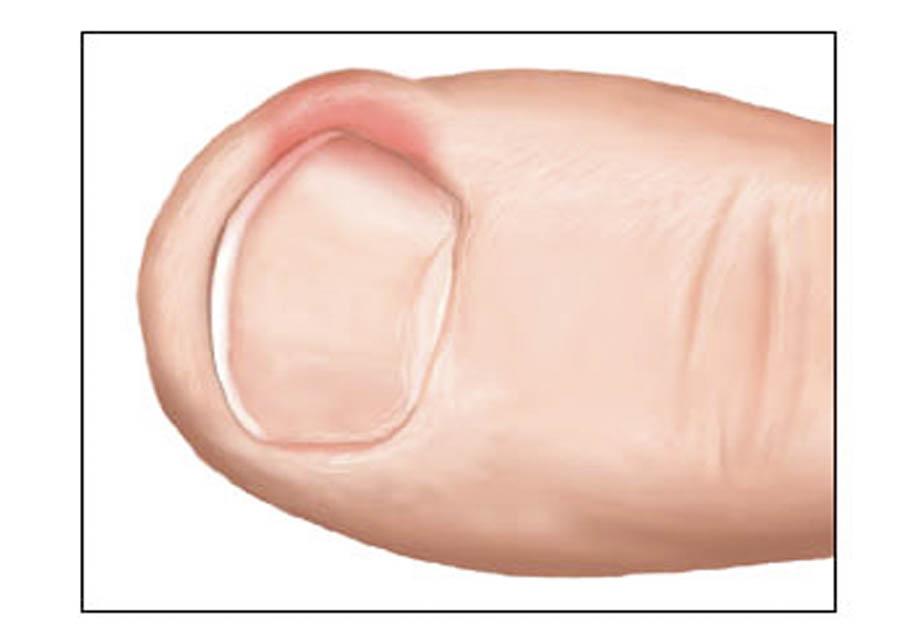
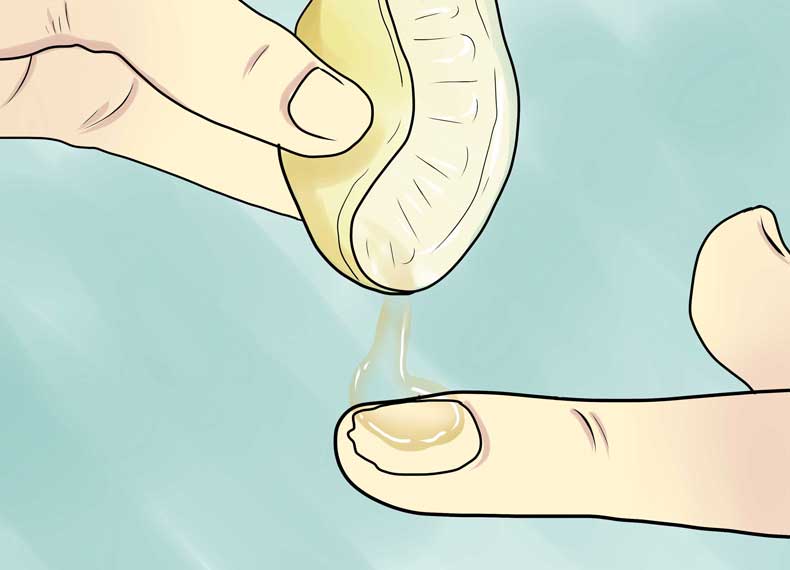
 It is dangerous that the fungus can settle on the nail for a long time, and not even one.
It is dangerous that the fungus can settle on the nail for a long time, and not even one.